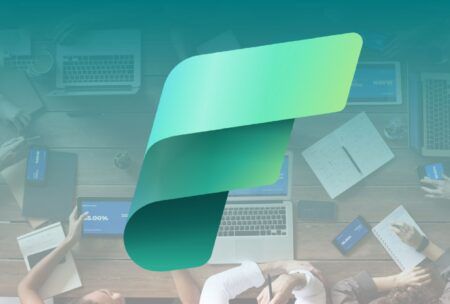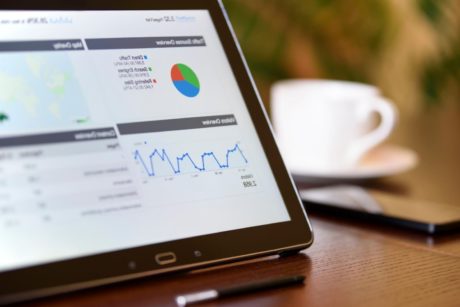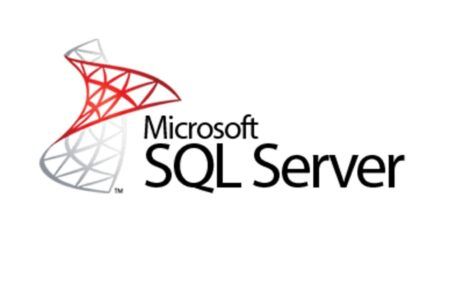What Is Microsoft Fabric? Unlock data mastery with our Microsoft Fabric Training. Learn from experts, explore analytics, and elevate your skills. Dive in now!
Read more.Instructor
Management Consultant / Data Scientist / No-Code Specialist
Access all courses in our library for only $9/month with All Access Pass
Get Started with All Access PassBuy Only This CourseAbout This Course
Who this course is for:
- Citizen and professional data practitioners
- Data professionals involved in data infrastructure, ETL, and data integration, seeking to integrate Fabric into their data workflows
- Business analysts aiming to expand their skills in data engineering, data lakes, and Power BI integration for reporting and visualization
- Data scientists exploring the use of Fabric in data science projects, including model management and Azure services integration
What you’ll learn:
- Understand Microsoft Fabric, its components, and how it functions
- Learn to explore, create, assign, and configure workspaces
- Discover data engineering principles in Microsoft Fabric, covering Lakehouse, Delta Lake, and the application of OneLake
- Explore data loading and ingestion options in the Fabric environment
- Understand the connection between Power BI and Fabric for effective data visualization
- Learn to use data factory to create and execute data pipelines in Fabric
- Gain insights into the uses of Fabric in data science and data engineering domains
- Develop a comprehensive understanding of performance management, SQL, KQL, and use KSQL Queryset, KSQL database, and KSQLMagic for data analysis
- Explore access control, governance, and monitoring in the Fabric environment
Requirements:
- Basic understanding and knowledge of data concepts and terminologies
- Programming experience is not required but recommended
- Simple understanding of cloud computing concepts and services, particularly for Microsoft Azure
Are you ready to delve into the dynamic world of Microsoft Fabric and elevate your data-professional and data engineering skills? This comprehensive course, spanning over 9 hours of engaging content, will guide you through the capabilities of Microsoft Fabric, Microsoft’s state-of-the-art data tools, and analytics platform.
What is this course all about?
The primary aim of this course is to provide a comprehensive guide to Microsoft Fabric, showcasing its diverse applications across data engineering, data science, and data analytics domains. By exploring these facets, you will develop a holistic understanding of how Microsoft Fabric can be effectively utilized in the data field.
What is Microsoft Fabric?
Microsoft Fabric is an all-in-one cloud-based analytics platform encompassing data migration, data lakes, data engineering, data integration, data science, real-time analytics, and business intelligence. With a user-friendly cloud SaaS interface, even those with limited data analytics knowledge can easily access and manage all analytics components on a single platform, simplifying data pipeline management, model deployment, and insight sharing.
Instructors:
Sawyer Nyquist: A data professional from West Michigan, USA, and Sr. Data Engineering Consultant at Microsoft, specializing in business intelligence, data engineering, and data platform architecture.
Hitesh Govind: A cloud solutions architect from Southern California, USA, with expertise in database administration and enterprise architecture, holding expert-level certifications in Azure Solutions Architecture, Data Engineer, and Power Platform.
Why learn Microsoft Fabric?
- Role-Tailored Tools: Tailored tools for data professionals, analysts, and engineers.
- Unified Platform: All-in-one platform unifying diverse analytics components.
- Cloud-Based Accessibility: Accessible from anywhere, ideal for distributed teams and quick scalability.
- AI-Powered Capabilities: Features like Copilot for efficient code writing and Data Activator for real-time data monitoring.
- Why choose this course?
- Learn from Experts: Industry experts with extensive knowledge in data science, analytics, and data engineering.
- Comprehensive Coverage: A complete guide covering data engineering, analytics, and data science.
- Practical Approach: Beyond theory, practical examples for real-world application.
- Instructor Support: Committed instructors providing assistance at every step.
Our Promise to You
By the end of this Microsoft Fabric training, you will have learned Data Factory, Warehouse, Data Science, Power BI all in Fabric.
10 Day Money Back Guarantee. If you are unsatisfied for any reason, simply contact us and we’ll give you a full refund. No questions asked.
Get started today with Microsoft Fabric data analytics.
Course Curriculum
| Section 1 - Introduction | |||
| Instructors Introduction | 00:00:00 | ||
| Learning Objectives | 00:00:00 | ||
| Understanding The Objectives | 00:00:00 | ||
| Success Criteria | 00:00:00 | ||
| Introduction | 00:00:00 | ||
| Course Roadmap | 00:00:00 | ||
| Section 2 - Microsoft Fabric Foundation | |||
| Overview Of Microsoft Fabric | 00:00:00 | ||
| Lakehouse Vs Warehouse | 00:00:00 | ||
| Fabric License Types | 00:00:00 | ||
| Getting-Started: Sign-Up Screen | 00:00:00 | ||
| Concept Of Workspaces | 00:00:00 | ||
| Create And Configure Workspace Access | 00:00:00 | ||
| Workspace Settings | 00:00:00 | ||
| Section 3 - Data Engineering - OneLake | |||
| Introduction To Data Engineering In Fabric | 00:00:00 | ||
| Introduction To OneLake | 00:00:00 | ||
| Lakehouse | 00:00:00 | ||
| Delta Lake | 00:00:00 | ||
| OneLake Explorer | 00:00:00 | ||
| Authentication And Authorization | 00:00:00 | ||
| Introduction To Shortcuts | 00:00:00 | ||
| Creating Shortcuts | 00:00:00 | ||
| Monitoring Hub And Data Hub | 00:00:00 | ||
| Section 4 - Data Engineering - Lakehouse | |||
| Introduction | 00:00:00 | ||
| Architecture | 00:00:00 | ||
| Distinctions Between Lakehouse And Warehouse | 00:00:00 | ||
| What Is Spark? | 00:00:00 | ||
| Notebook Overview | 00:00:00 | ||
| Web Based And Vs Code Notebooks | 00:00:00 | ||
| Spark + Monitoring Spark Jobs | 00:00:00 | ||
| Section 5 - Data Warehouse - Serverless Engine | |||
| Warehouse-SQL Scripts | 00:00:00 | ||
| Introduction | 00:00:00 | ||
| Default Dataset And Modelling | 00:00:00 | ||
| Ingest Methods | 00:00:00 | ||
| Load Data Introduction | 00:00:00 | ||
| Load Data Into Lakehouse | 00:00:00 | ||
| Load Data Using Data Pipeline Part 1 | 00:00:00 | ||
| Load Data Using Dataflows | 00:00:00 | ||
| Load Data Using Data Pipeline Part 2 | 00:00:00 | ||
| Models And Power BI Reports | 00:00:00 | ||
| Cross-Database Query | 00:00:00 | ||
| Roles + Permissions (Rls, Cls) | 00:00:00 | ||
| Manage Performance | 00:00:00 | ||
| Section 6 - Real-Time Analytics | |||
| Real-Time Analytics – KQL Scripts | 00:00:00 | ||
| SQL Vs KQL Introduction | 00:00:00 | ||
| Create, Process And Monitor | 00:00:00 | ||
| KSQL Queryset | 00:00:00 | ||
| KSQL Database | 00:00:00 | ||
| Spark | 00:00:00 | ||
| KSQLmagic | 00:00:00 | ||
| Section 7 - Data Factory Introduction | |||
| What Is Data Factory? | 00:00:00 | ||
| Data Flows And Pipelines | 00:00:00 | ||
| Architecture | 00:00:00 | ||
| Workspace Setup | 00:00:00 | ||
| Section 8 - Data Factory End-To-End Build | |||
| Control Table And Copy Data | 00:00:00 | ||
| Metadata Copy Pattern | 00:00:00 | ||
| Script Activity | 00:00:00 | ||
| Data Flows Gen2 Introduction | 00:00:00 | ||
| Data Flows Gen2 Continuation | 00:00:00 | ||
| Execute Pipeline | 00:00:00 | ||
| Shortcut To Other Workspaces | 00:00:00 | ||
| Notebooks | 00:00:00 | ||
| Data Flow Gen2 Transformations | 00:00:00 | ||
| Pipelines, Notebooks And Parameters | 00:00:00 | ||
| Monitoring Notebooks In Pipelines | 00:00:00 | ||
| Section 9 - Data Visualization With Power BI | |||
| Power BI And Fabric | 00:00:00 | ||
| Version Control | 00:00:00 | ||
| Direct Lake | 00:00:00 | ||
| Section 10 - Data Science | |||
| Data Science – Resources | 00:00:00 | ||
| What Is Data Science? | 00:00:00 | ||
| The Data Science Process | 00:00:00 | ||
| Items And Models | 00:00:00 | ||
| Excercise | 00:00:00 | ||
| Saving Models | 00:00:00 | ||
| Model Management | 00:00:00 | ||
| Section 11 - Data Management | |||
| Introduction | 00:00:00 | ||
| Access Control | 00:00:00 | ||
| Governance | 00:00:00 | ||
| Monitoring | 00:00:00 | ||



